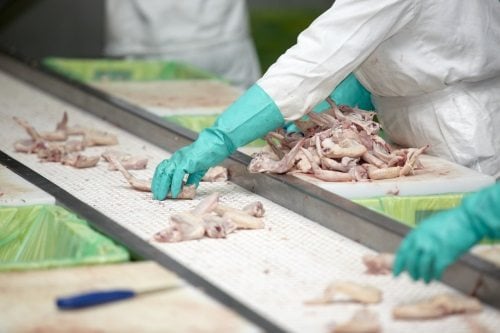Foodborne infections continue to be an important public health problem in the US, according to an annual report by Centers for Disease Control and Prevention (CDC).
It says the rate of salmonella infections decreased by about 9% in 2013 compared with the previous three years, bringing it to the rate last observed in the 2006-2008 baseline period.
However, campylobacter infections, often linked to dairy products and chicken, have risen 13% since 2006-2008.
Vibrio infections, often linked to eating raw shellfish, were at the highest level observed since active tracking began in 1996; however, rates of infections caused by Vibrio vulnificus, the most severe species, have remained steady.
Rates of the other foodborne infections tracked have not changed since the period between 2006 and 2008.
“This year’s data show some recent progress in reducing salmonella rates, and also highlight that our work to reduce the burden of foodborne illness is far from over,” said Robert Tauxe, deputy director of the Division of Foodborne, Waterborne and Environmental Diseases.
“To keep salmonella on the decline, we need to work with the food industry and our federal, state and local partners to implement strong actions to control known risks and to detect foodborne germs lurking in unsuspected foods.”
The data for the report card come from the Foodborne Diseases Active Surveillance Network (FoodNet), a group of experts from CDC, ten state health departments, the U.S. Department of Agriculture’s Food Safety and Inspection Service (FSIS), and the U.S. Food and Drug Administration (FDA).
In 2013, FoodNet logged more than 19,000 infections, 4,200 hospitalizations, and 80 deaths from the nine germs it tracks.
Young children were the most affected group for seven of the nine germs that FoodNet tracks.
Food safety measures
New standards for cut-up poultry parts and plans to modernize poultry inspection are already in the works to increase the safety of chicken.
Regulations designed to help prevent food safety problems have been proposed for many sectors of the food industry, including produce farms, food facilities, food importers, food transporters, and third-party auditors/certification bodies.
“Steps are underway to address many of the concerns raised in this report, such as our Salmonella Action Plan and other plans to modernize food inspection,” said assistant administrator for FSIS’ Office of Public Health Science David Goldman.
“The latest information from FoodNet highlights the importance of continuing preventive measures from the farm to the consumer,” said Stephen Ostroff, FDA’s acting chief scientist.
“We are making significant progress in implementing the FDA Food Safety Modernization Act, having issued seven proposed rules addressing the safety of produce, imported foods, and human and animal food production and transportation. Full implementation of these rules will help prevent these types of infections.”










